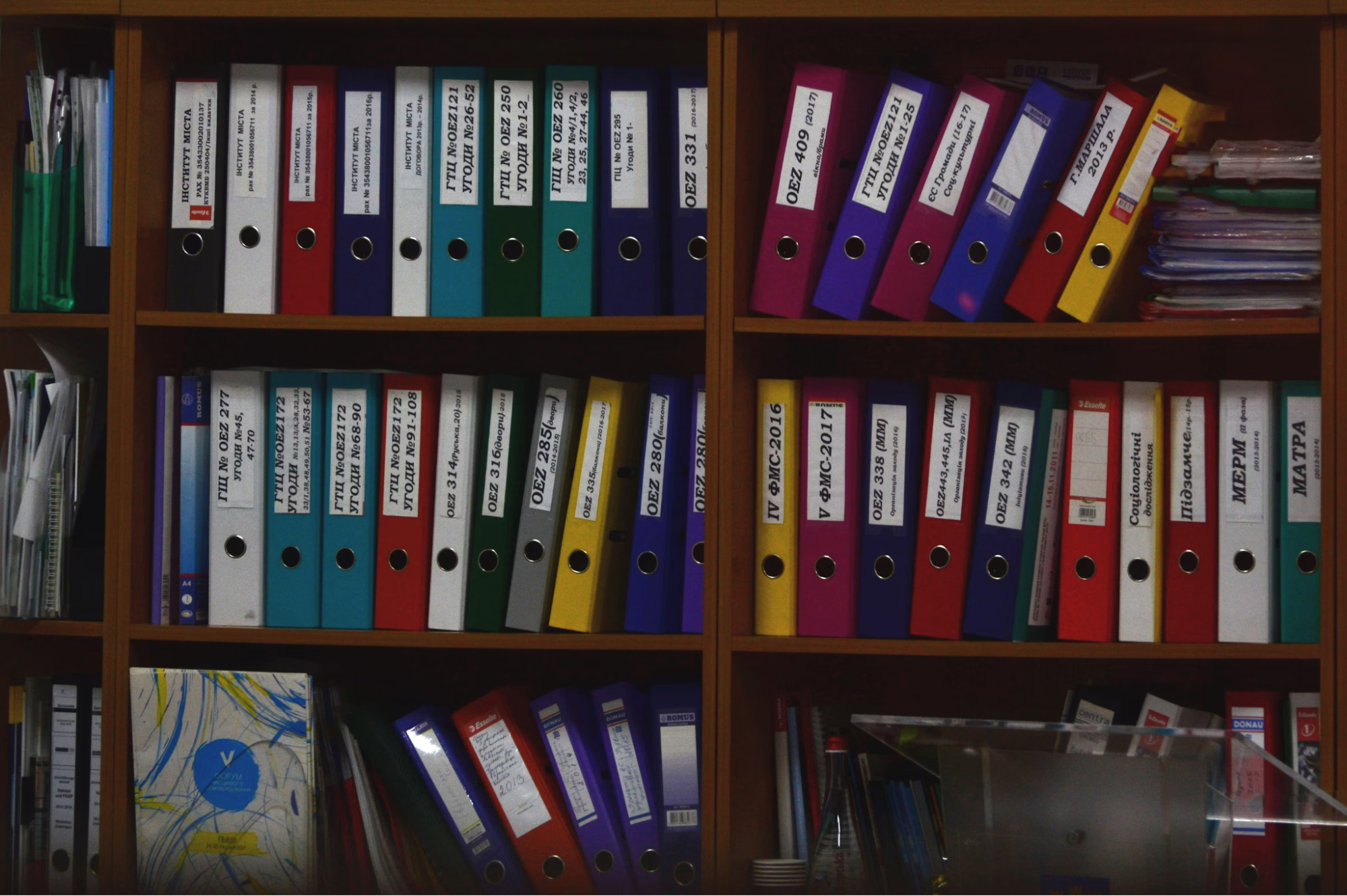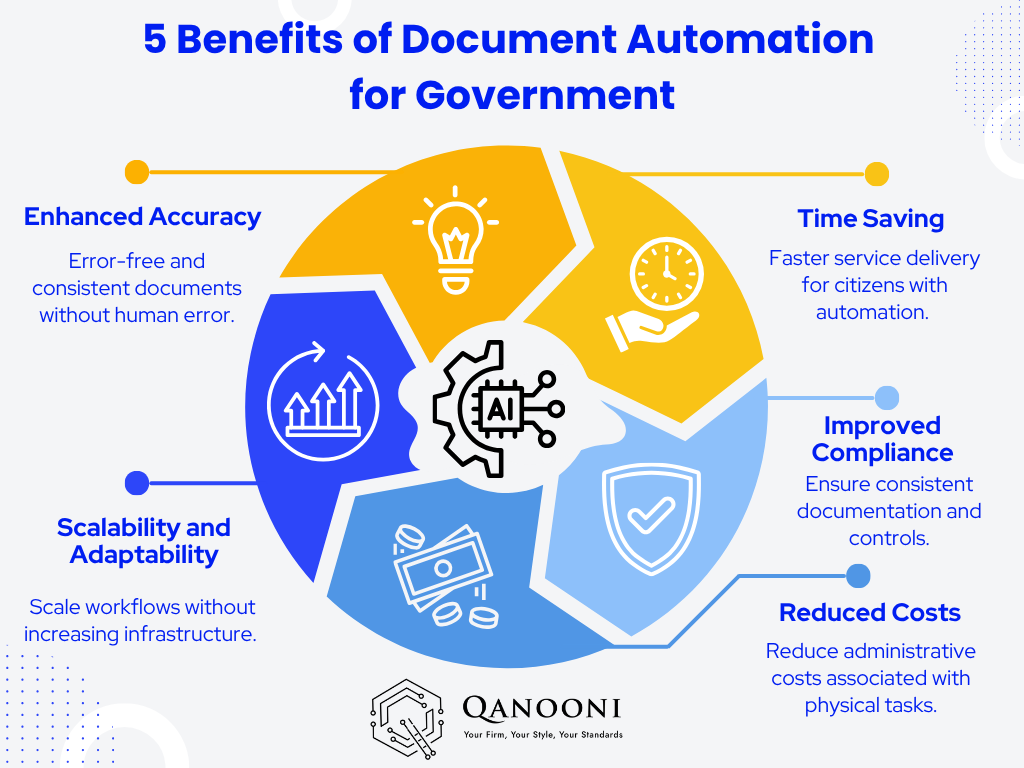
Document Automation for Government: Boosting Efficiency & Time Saving
Government agencies across the world are managing a lot of data, which means daily paperwork and repetitive tasks. Because of this, government offices are under increasing pressure to modernise their administrative tasks.
From compliance to citizen services, the volume of documentation handled by public institutions is immense and constantly growing. Manual documents not only take a lot of time and resources, but there's also a high risk of human error and inefficiencies.
This is where document automation for government comes in as a transformative solution. In this article, we will explore how governments can benefit from document automation to streamline workflows, enhance compliance, all the while saving time and reducing operational overhead.
Key Takeaways
- Document automation for government reduces repetitive tasks, requiring less manual effort.
- Automated document workflows provide audit trails, time stamps, and version control, making it easier to trace decisions and prove compliance during audits.
- Governments can reduce administrative costs by using automation to minimise printing, paper use, physical storage, and staff hours spent on repetitive document tasks.
What is Document Automation?
Document automation is the use of software and digital tools to create, manage, and process documents with minimal human input. By automating repetitive tasks, like data entry, approval routing, document generation, and archiving, government agencies can reduce manual effort and resources.
In a legal or government context, document automation tools help generate contracts, official notices, compliance reports, and legal documentation using standardised templates and predefined rules. This ensures consistency, accuracy, and fast turnaround, especially in environments governed by strict regulatory frameworks.
Why Government Agencies Need Document Automation
Document automation is the future for government agencies, but let's take a look at why there is a great need for this change.
High Volume of Paperwork
Government departments—from immigration and taxation to public health and city planning—process thousands of documents daily. This includes applications, permits, licenses, legal notices, agreements, and more. Managing such a large volume manually leads to bottlenecks and delays that impact both internal operations and public service delivery.
Regulatory Compliance
Government institutions must rigorously follow established legal protocols and regulations. Document automation helps ensure that every document generated is compliant with current laws, rules, and policy frameworks. Templates can be regularly updated to reflect new legal standards, minimising non-compliance risks.
Accountability and Transparency
Government institutions are expected to be accountable and transparent in their operations. Automated document workflows provide audit trails, time stamps, and version control, making it easier to trace decisions and prove compliance during audits or legal inquiries.
Legal Applications of Document Automation
Platforms like Qanooni can leverage document automation to serve both government institutions and legal practitioners. Some legal-focused use cases include:
Contract Lifecycle Management
Government contracts, whether with vendors, contractors, or NGOs, often require extensive legal documentation. Automating document creation ensures standardisation and reduces time spent drafting repetitive clauses.
Litigation Support
Legal departments within government agencies can automate the generation of notices, affidavits, and motion documents. This can significantly reduce time spent on legal admin work and allow legal officers to focus on core advisory duties.
Policy Drafting and Review
Using document automation tools, drafts of government policies or amendments can be created quickly and collaboratively, with built-in workflows for review, suggestions, and approvals.
Key Benefits of Document Automation in Government

Document automation for government institutions seems promising, but what does it actually mean in terms of practice? Let's have a look at some of the benefits it has for government institutions:
Improved Efficiency and Time Saving
The most immediate benefit of document automation is the time saved. Processes that once required hours or even days, like generating tax notices, business licenses, or official letters, can now be completed within minutes. This translates into faster service delivery for citizens and more productive government staff.
Improved Accuracy
Manual mistakes in official documents can lead to significant legal and reputational risks. Automation ensures that documents are error-free, consistent, and aligned with legal templates. It reduces the risk of mistakes caused by human oversight.
Better Public Service Delivery
Document automation contributes directly to better citizen experiences. Whether someone is applying for a building permit or requesting legal aid, faster processing times and accurate documentation enhance trust in public institutions.
Cost Reduction
Governments can reduce administrative costs by minimising printing, paper use, physical storage, and staff hours spent on repetitive document tasks. Automation also reduces the need for expensive error corrections or rework.
Scalability and Adaptability
As populations grow and new legal frameworks evolve, governments must adapt rapidly. Document automation allows institutions to scale their document workflows without needing proportional increases in staff or infrastructure.
Challenges and Considerations
While the advantages are clear, implementing document automation in the public sector also comes with challenges:
Data Security and Privacy
Government documents often contain sensitive information. Any document automation system must comply with data protection laws such as GDPR or local data privacy regulations. Encryption, access control, and secure storage are non-negotiable features.
System Integration
Most government departments already use legacy systems. Any new automation solution must integrate seamlessly with existing software platforms (such as case management systems, ERP, or CRM tools) to ensure a smooth transition.
Change Management
Staff training and cultural adaptation are crucial for success. Employees need to be educated on how to use the new system, and buy-in must be secured from leadership to encourage adoption across departments.
Real-World Use Cases of Document Automation in Government
Document automation is not limited to certain government departments. It can be applied in various sectors, including legal institutions and immigration.
Let's take a look at some use cases of document automation in the government sector:
Judiciary Systems
Courts in several countries have adopted automation for issuing case notices, hearing summaries, and judgments. This reduces delays and improves access to justice.
Municipal Governments
Local councils can automate the processing of building permits, utility applications, and business licenses, reducing waiting times and improving satisfaction among citizens and business owners alike.
Immigration Departments
Document automation is particularly useful in visa processing, where standardised forms, biometric data, and background checks are managed digitally and efficiently.

How Qanooni Supports Document Automation for Government
At Qanooni, we understand the unique needs of government institutions, particularly in legal and regulatory processes. Our document automation features are designed to support:
- Custom legal templates tailored to UAE and international compliance frameworks
- Smart workflows that allow multiple reviewers, approvers, and editors to collaborate
- Integration with existing case management systems used by public legal departments
- Audit trails for all changes, ensuring transparency and accountability
- Scalable document generation, suitable for everything from municipal applications to federal-level legal proceedings
Our platform combines legal intelligence with intuitive technology to help public institutions deliver faster, fairer, and more efficient services.
FAQs
What is the difference between document automation and IQ bot?
An IQ bot only deals with document classification. Document automation, on the other hand, focuses on additional customizable features like data entry, document generation, approval routing, and archiving.
Is document automation safe for government agencies?
Yes, document automation is safe and beneficial for government institutions. It enhances security by automating repetitive tasks, reducing human error, and offering role-based access to data.
Final Thoughts
In an era where citizens expect prompt, efficient, and transparent governance, document automation for government is no longer a luxury—it is a necessity. Legal-tech platforms like Qanooni can play a pivotal role in helping public institutions embrace this change while ensuring compliance with local and international legal standards.
The benefits include a reduced workload, better compliance, cost savings, and improved public service, making document automation a smart investment for any forward-thinking government.
As legal processes continue to evolve, governments must leverage technology not just to keep pace but to lead with agility, accuracy, and accountability. And with tools like Qanooni, they are well-equipped to do just that.
Ready to streamline legal documentation at your government institution?
Try Qanooni today and explore how our modern templates can help streamline your legal documentation.
👉 Visit Qanooni.ai to request a free demo or explore how Qanooni can simplify your daily workflows, saving you a lot of time.
